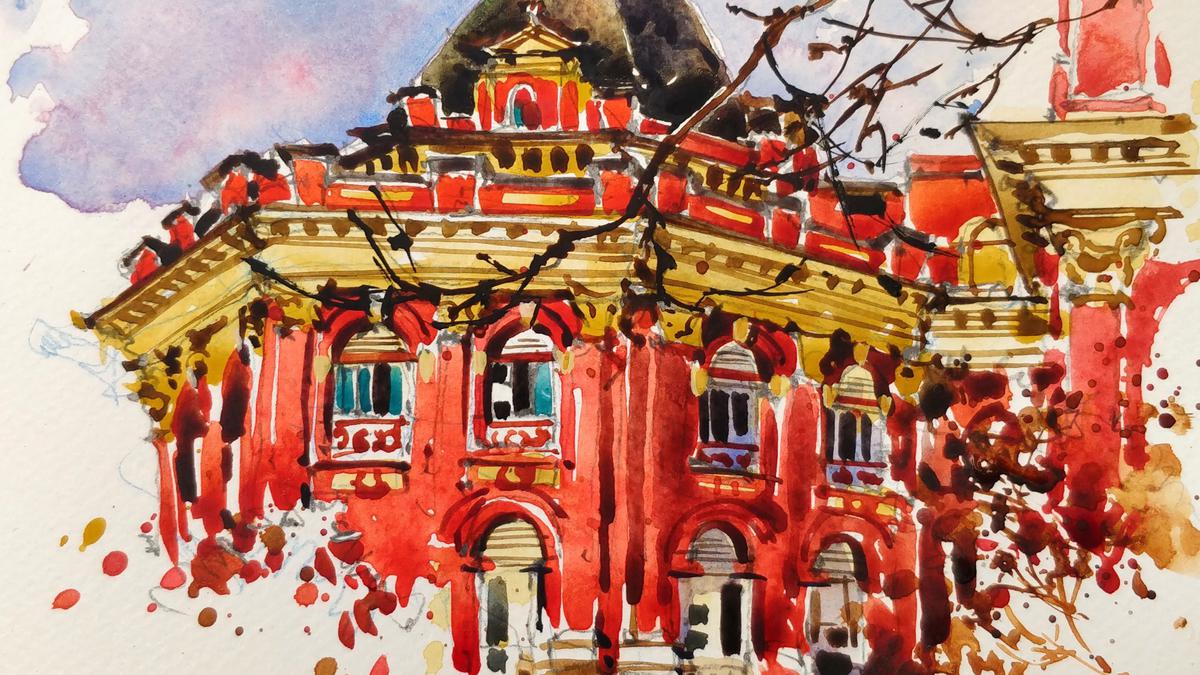
Illustrated cities of Instagram
The Hindu
Indian cities are always in a state of flux, often edging out old landmarks and heritage buildings. But now artists on social media are documenting these disappearing cityscapes
India’s big cities are racing towards a sprawling homogeneity, devoid of history, culture and personality. Old cafés, storefronts and buildings — with their Art Deco, Indo-Saracenic, Gothic styles — are disappearing, often replaced by a big retail chain. It’s getting harder to find those elements that once differentiated a Delhi from a Mumbai, or a Kolkata from a Chennai.
While there are rules surrounding the preservation of old buildings and heritage structures in the country, they vary. The Ancient Monuments and Archaeological Sites and Remains Act of 1958, for instance, provides for the preservation of old and historical monuments, but it may not apply to the colonial building down the street. “There is a huge lack of awareness around old buildings and heritage structures in India,” says Nitin Kumar, a conservator with INTACH (Indian National Trust for Art and Cultural Heritage). “People like to have new things, but they forget: how can you build the new without the foundation of the old?”
Interestingly, Instagram is now becoming an archive of sorts. Urban sketchers are meticulously documenting streetscapes and architecture quintessential to their cities. Their motivations range from love for their cities to a nostalgic trip down memory lane. In the process, what’s being created is a living, evolving portrait of a city.
“Architecture gives personality to neighbourhoods, ensuring you remember a place long after you’ve left it,” says Kumar, an architecture graduate who has been sketching his city since 2018. Take, for instance, the Ghadiyal Godi, a landmark in at Victoria Docks. “During British times, ships loaded with arms and gold came to the docks. Workers would go inside the godi [clock tower] to sign for the goods. Once, freedom fighters blasted a ship, and it was raining gold and fire. Along with the ship, the clock tower was destroyed,” he says. “Even today, you can feel this history, but the tower is so neglected. Why aren’t we celebrating it?” So, Kumar sketched the godi. Twice.
Mumbai has many such sites and stories. At the moment, Kumar is documenting 50 cafés of the city, including little known nooks such as Steps in Bandra, a narrow three-storey house that was converted into a café. “Everybody talks about the cafés of Paris, but Bombay is a city of cafés. Look at Bandra or Kala Ghoda. Each of the cafés have fabulous interiors, and are also a means of preserving the buildings.”
How does he pick his projects? Kumar always looks for a story. The kaali-peeli is his tribute to Mumbai’s Premier Padmini taxis that are being discontinued. “The story is not just in the buildings, but the whole atmosphere,” he says.
“How do you differentiate Crawford Market from Bandra Fashion Street? They’re both crowded, but in Crawford Market, you’ll see people either walking or on cycles, whereas in fashion street, the crowd will be more hip and fashionable. That’s what I want to capture.” Kumar has exhibited his works around the world, from the London Art Biennale (2021) to Dubai World Art (2023), and usually sells for upwards of ₹25,000.

‘Love Scout’ K-Drama review: Han Ji-min and Lee Jun-hyuk lead a mature, refreshing workplace romance
‘Love Scout K-Drama’ review: A refreshing, mature workplace romance












